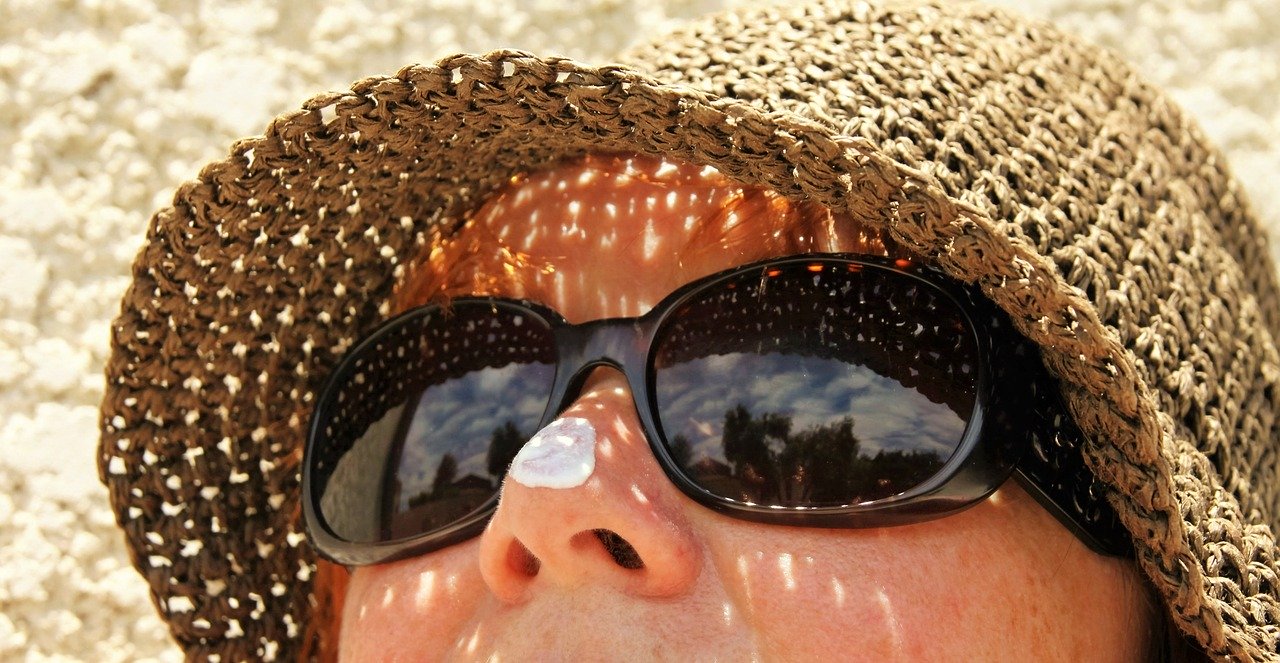It’s May and spring has arrived. Wahoo! We may be on stay-at-home order until later this month but that doesn’t mean we aren’t outside celebrating the passage of old-man-winter. In a nod to skin cancer prevention month, don’t forget a trusted friend: sunscreen. Use these sun safety reminders and sunscreen guidelines to protect you and family members from sunburn and over-sun-exposure that can lead to skin cancer or early aging.
Think you’re not at risk? Minnesota Department of Health statistics show that melanoma, the most serious type of skin cancer, has doubled in Minnesota since 1990. In fact, our state is the fourth highest in the nation for melanoma. Further, research shows that most Minnesotans don’t use enough sunscreen to protect themselves, particularly on vulnerable areas such as the chest, arms, and legs.
Sun Safety Basics Revisited
The sun’s rays are most intense between 10 a.m. and 2 p.m., and for fair-skinned Minnesotans who’ve been hibernating all winter, those rays can spell trouble no matter how good they feel. If you’re spending time on the beach, the ski slopes, or any other outdoor activity, use sunscreen on all exposed body parts and wear wrap-around sunglasses with 99% UV absorption. If you’re on the beach for some time, cover up with light-weight, long-sleeved shirts and pants, and use protective hats with at least a 2-3” brim. Keep babies out of the sun as much as possible but especially between the hours of 10 a.m. and 2 p.m. when the sun’s rays are most strong.
Don’t Miss A Spot
The Food and Drug Administration (FDA) updated sunscreen labeling criteria several years ago and it’s worth your time to get acquainted with them. The revised requirements help to protect consumers and help you make more informed choices.
- Use a sunscreen with a sun protective factor (SPF) of 15 or greater. It’s recommended children over age 6 months use a sunscreen of SPF 30 or greater. Sunscreen is not recommended for infants; rather, keep infants out of the sun between 10 a.m. and 2 p.m. There is no evidence (yet) that sunscreen labeled as greater than 50 offers additional protection than those at 50.
- Look for sunscreen that is labeled “broad spectrum”, which means it will protect you from both types of ultra violet rays, UVA and UVB, which can lead to skin cancer and photo-aging. If it only protects against sunburn, the sunscreen can’t say it’s “broad spectrum”.
- Use sunscreens as directed on the label.
- If you’re looking for the safest sunscreen to use on children, sunscreen that includes either zinc oxide or titanium dioxide is recommended.
- Apply sunscreen a half hour before going outside. Doing so allows the sunscreen time to activate. Average-sized adults and children should use about an ounce, which equates to about a ¼ cup or a shot-glass size of lotion.
- Be sure to apply sunscreen on these often-missed body parts: tops of ears, tops of hands and feet, tops of heads, hairline, lips, and back of neck.
- Use sunscreen even on cloudy days.
- Reapply every couple of hours and more so if you and your family are in and out of the water or if you’re sweating.
- While manufacturers can claim their sunscreen is “water resistant”, there is no such thing as a “waterproof” or a “sweat proof” sunscreen and manufacturers can no longer make this claim.
- Use sunscreen all year long, not just in warmer months.
if you have a skin lesion you are concerned about or would like to know if you are at increased risk for skin cancer you should discuss this with your primary care provider.
For appointments, call 763-587-7000.

